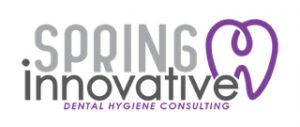
As dental professionals, we all take the responsibility to present treatment cases to patients. Most often, the dental hygienist presents periodontal treatment plans to patients, but in reality, any team member could present this type of case. For example, if a new patient is seen on the doctor’s schedule and periodontal disease is the diagnosis, the dental assistant could have the opportunity to present the case. It is important that with any case presentation, the team is on the same page. There is nothing worse than planting a seed in the operatory to arrive at the front desk and not have a proper handoff and closure, and you see your patient walk out the door- unscheduled.
In your team meetings, discuss how OralDNA® can create awareness and why it can increase case acceptance. If you are considering streamlining your hygiene protocols, or want to implement the latest technology in your practice, here are tips and tricks that can help get you started. First, it is extremely important to have written standards that your team can follow. Defining periodontal protocols will help your team effectively treatment plan as well as identify key patients that can benefit from salivary testing, like MyPerioPath®.
Second, prepare team trainings on periodontal disease and the oral-systemic link. This preparation will help all team members identify patients that have systemic risk factors, such as heart disease, diabetes, or high blood pressure, or those patients who have an inflammatory burden on their body. All clinical team members are responsible for taking medical histories, and this can be the first step in a conversation about MyPerioPath® bacterial testing.
Third, ensure that full periodontal charting is performed and recorded, especially bleeding points. This is the BEST way to show and explain the patient’s condition to them. When declining oral health accompanies systemic risk factors, or bleeding on probing, it immediately opens the door for me to begin a conversation about OralDNA® salivary testing.
A few key phrases that I like to use are:
- “I am concerned about the amount of bleeding I see.”
- “Just like your medical doctors, we now have a diagnostic test, that can help us better treat your disease.”
- “This test identifies the specific bacteria in your mouth, causing this infection.”
- “The results guide us to prescribe the correct antibiotic option, if needed, along with your treatment.”
In my experience, the patients that combine OralDNA® salivary testing with traditional nonsurgical therapy have superior results. Now, more than ever we know what impact oral disease has on the body and we have the technology to help identify harmful bacteria. I truly believe salivary testing brings us one step close improving patients’ lives and I would encourage both dental and medical professionals to consider implementing salivary diagnostics. Visit the Protocol Directory for further details.
For more information on how to become an OralDNA Provider – scan HERE: 
- Simple Strategies to Enhance Oral & Overall Health - July 13, 2018
